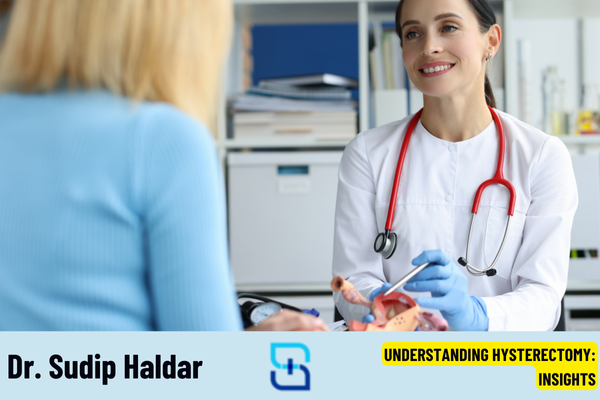A hysterectomy, the surgical removal of the uterus, is a common procedure performed for various medical reasons, including cancer, fibroids, and other gynecological conditions. Dr. Sudip Haldar, a top cancer surgeon and renowned specialist in Jalpaiguri, provides a comprehensive overview of hysterectomy, explaining its types, the reasons it may be necessary, and what patients can expect during recovery.
What is a Hysterectomy?
A hysterectomy is a surgical procedure in which a woman’s uterus is removed. Depending on the condition being treated, the surgery may also involve the removal of other reproductive organs, such as the ovaries and fallopian tubes. After a hysterectomy, a woman will no longer have menstrual periods or be able to conceive.
Types of Hysterectomy
Dr. Sudip Haldar explains that there are several types of hysterectomy, each tailored to the specific medical needs of the patient:
- Total Hysterectomy: The most common type, where the entire uterus and cervix are removed.
- Subtotal (Partial) Hysterectomy: Only the upper part of the uterus is removed, leaving the cervix intact.
- Radical Hysterectomy: Typically performed to treat cancer, this procedure involves the removal of the uterus, cervix, part of the vagina, and surrounding tissues, including the lymph nodes.
- Hysterectomy with Bilateral Salpingo-Oophorectomy: Involves the removal of the uterus, both ovaries, and fallopian tubes, often performed when the ovaries are affected by disease or when cancer is present.
Why is Hysterectomy Performed?
Hysterectomy is recommended for various medical conditions, including:
- Cancer: Hysterectomy is often a crucial part of treatment for cancers of the uterus, cervix, or ovaries.
- Fibroids: Noncancerous growths in the uterus can cause heavy bleeding, pain, and other symptoms, sometimes necessitating removal.
- Endometriosis: A condition where tissue similar to the uterine lining grows outside the uterus, causing pain and infertility, may be treated with a hysterectomy.
- Uterine Prolapse: The uterus descends into the vaginal canal due to weakened pelvic floor muscles, often requiring surgical correction.
- Chronic Pelvic Pain: In cases where other treatments have failed, a hysterectomy may be considered to alleviate persistent pelvic pain.
Recovery and Aftercare
Recovery from a hysterectomy varies depending on the type of surgery performed and the patient’s overall health. Dr. Sudip Haldar outlines some key aspects of the recovery process:
- Hospital Stay: Most patients stay in the hospital for a few days post-surgery, particularly after an abdominal hysterectomy.
- Activity Restrictions: Patients are advised to avoid heavy lifting and strenuous activities for several weeks to allow proper healing.
- Pain Management: Pain and discomfort are common after surgery, but these can be managed with prescribed medications and rest.
- Follow-Up Care: Regular follow-up appointments are crucial to monitor healing and address any complications.
Conclusion
Hysterectomy is a major surgical procedure that can be life-saving and significantly improve the quality of life for women suffering from certain medical conditions. Dr. Sudip Haldar, a leading cancer surgeon in Jalpaiguri, provides expert care and guidance for women considering or undergoing a hysterectomy, ensuring they receive the best possible treatment tailored to their needs.
If you are considering a hysterectomy or need more information about your surgical options, consult with Dr. Sudip Haldar for professional and compassionate care.

